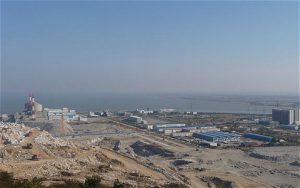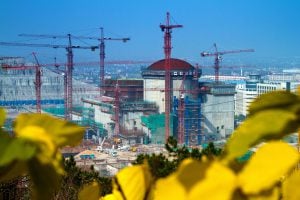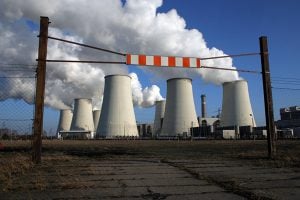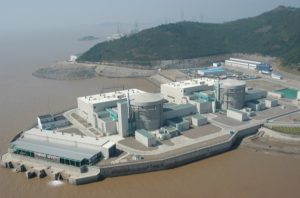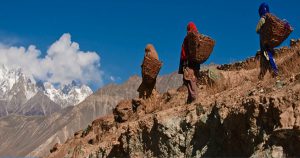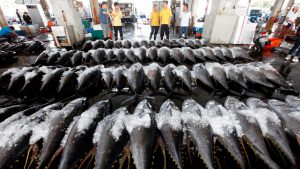China may be the world’s most pro-nuclear state. The government’s ambitious plans will see nuclear-generating capacity (in operation or under construction) almost double over the next six years from 49 to 88 gigawatts. At that point China will be the world’s second largest producer of nuclear power, behind only the US.
That’s the idea at least. But increasingly negative public attitudes towards nuclear power spell trouble ahead. China has seen frequent anti-nuclear protests since Japan’s 2011 Fukushima disaster. In particular inland nuclear plants – considered less safe than coastal power stations due to earthquake risks and distance from secure water supplies needed for cooling – have become an emotive issue, alongside PX factories and incinerators. Swathes of the public do not believe that a country which fails to guarantee the safety of milk and foodstuffs can be trusted to operate nuclear plants.
If China is to achieve its ambitious targets, the country needs to build nuclear facilities inland, and fast – perhaps as early as 2015. A fierce battle between the pro- and anti-nuclear camps may be on its way.
Growing public concerns
Before the reactor meltdown at Fukushima, the Chinese public knew little about nuclear power and the relative merits of coastal and inland plants. Three provinces – Jiangxi, Hunan and Hubei – had chosen sites for inland nuclear-power stations and preliminary work was under way. But what awareness there was had been focused on the rich and power-hungry coastal regions, where China’s existing 17 nuclear-power stations are all located.
However, interest in nuclear power is also strong among China’s rapidly developing provinces in central China, where energy demand is rising. Nuclear suits local governments perfectly: they get not only an ample supply of electricity, but also the huge investments that nuclear construction requires.
After Fukushima, then, the Chinese had more than one reason to think again about nuclear power. Concerns first arose over the Pengze plant, which was under construction in Jiangxi, near the border with Anhui province (the Anhui county of Wangjiang is just five kilometres away). All the benefits from the plant – GDP growth, taxation, employment – would have accrued to Jiangxi, but any problems would impact Anhui too.
In late 2012, four retired government employees from Wangjiang wrote an open letter to the State Council, China’s highest administrative body, calling the wisdom and legality of the Pengze plant into question. They pointed to procedural problems around site selection and public hearings and called for the project to be cancelled. Subsequently He Zuoxiu, a member of the Chinese Academy of Sciences and well-known activist whose family is originally from Wangjiang, wrote an article opposing the plant and calling for the Chinese government to approach expansion of nuclear power with caution.
Thanks to widespread media coverage, the case became one of the hot topics of the year. Nuclear-power companies offered some response, but to little effect: mostly their contributions were overly technical and inaccessible to the public. Gradually the debate over Pengze morphed into a nationwide wave of anti-nuclear sentiment.
In October that year, the government lifted a moratorium on nuclear-power construction that had been in place since the Fukushima disaster, but also said there would be no building of inland nuclear-power plants until 2015.
China’s smog problems, reaching new extremes in 2013, added fire to the pro-nuclear lobby’s arguments. Coal-fired power plants, steel refineries and concrete manufacturers were widely blamed for the dire air pollution, and strict restrictions placed on those sectors. The government also said that, as nuclear power does not cause pollution, it should be expanded – on the condition that safety is guaranteed.
In early 2014 the Chinese People’s Political Consultative Conference, an advisory body, dedicated one of its bi-weekly high-level meetings to calming the increasingly murky waters. Leading nuclear opponent He Zuoxiu was invited to attend, and in a speech adjusted his stance from “opposed to nuclear power” to “opposed to inland nuclear power, but not coastal nuclear power”.
The change in tack gave a boost to the nuclear sector, and there were calls for new plants – even the inland plants He explicitly opposed – to be rolled out fast. The Hunan provincial government repeatedly pleaded for a rapid start to construction of the Yaohuajiang nuclear power plant, with some experts claiming that “20 million Hunanese are eagerly awaiting the start of work on Taohuajiang.”
Poor quality debate
New opposition voices are emerging, however. Since April this year, Wang Yinan, a researcher at the Development Research Centre (DRC), has on at least three occasions put forward anti-nuclear arguments in articles or interviews. The DRC is a policy and consulting body subordinate to the State Council and the views of its experts carry considerable authority. Wang is a protégé of He Zuoxiu and their views are closely aligned.
Wang is quickly becoming the leader of the new anti-nuclear generation. Her articles are popular, and online feedback indicates that a majority of the public support her views. Nonetheless, the performance of the anti-nuclear camp has been disappointing. Opinion-leaders have failed to promote dialogue and elucidate the facts through discussion, while arguments have often pandered to public anti-nuclear sentiment. Ultimately, the debate has deteriorated into a war of words. Some academics have demonstrated a lack of rigour too: in one open letter, Wang herself relied on incorrect data and distorted news reports.
The nuclear sector’s performance has been even worse. Before 2011 it was largely ignored by the public and it has struggled to adapt to the sudden limelight. During the post-Fukushima crisis, China’s nuclear companies reacted sluggishly and failed to issue timely statements. On many occasions I have asked industry figures why they haven’t said anything about a particular issue, only to be told that “we’ll just wait and see what happens”, “there’s no need to respond”, and “we’ll say something when we absolutely have to.”
While anti-nuclear academics and the public openly interact, moreover, those in the pro-nuclear camp rarely engage in debate using their real names. He Zuoxiu and Wang Yinan have on at least five occasions published open letters or spoken to journalists about their views. But no pro-nuclear academic or official of similar rank has made a public response. The nuclear industry has plenty of experts on their side, including two academics of similar or higher rank to He, but they do not regard He and Wang’s arguments as worthy of response. The industry is yet to realise the importance of public relations.
Little experience dealing with the outside world has also left the nuclear sector without the tools to persuade the public that its power stations are safe. When thousands took to the streets in Jiangmen, south China, to protest against a uranium processing plant, an academic made the case for the facility at a hastily convened government press conference. But his language was impenetrable, and the angry protesters paid no attention.
